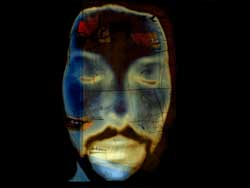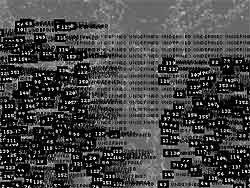|
|
HOME
> STUNNED NET ART OPEN
|
|
The Presence of Absence : Peter Horvath
In Peter Horvath's films for the web a multi screened, quasi-narrative unfolds with the participation of the viewer. Many of his pieces examine family histories, the city as organism, matters of the heart and the complexities of connection or disconnection with others. His audiovisual reveries share some of the open-ended qualities of the films of Chris Marker, Jonas Mekas and Tarkovsky's The Mirror. With The Presence Of Absence the iconic face, etched with opaque information, is the key to navigating the site, just as we often read into the face of others for signs of recognition. Posted by stunned at 03:24 PM
From Marble to Pixels : Influenza - Raquel Rennó and Rafael Marchetti
This work sets out to create a web project based upon data that allow a reflection on the image representation and the exchange of information within a metropolis. This departs from the premise that a city, the size of Sao Paulo for example, can only be partially experienced, in a fragmented, multiple fashion. It may belong to one or more nuclei with such experiences building distinct narratives (and distinct urban meanings). A megacity in Latin America is a place where oposites live together: the big corporation skyscrapers, the “favelas”; the constant construction of new elements side by side with elements of the past; the vertical movement, the limits; the empty spaces, the excess; the colapse of urban scene, the tensions and the pavement, still the primary media to transmit informations. All these factors together create a mosaïque that each citizen put together in his own way. All images are of the city of Sao Paulo (Brazil) and have been combined, based on key-words which seek to conceptualize certain elements present in the urban environment, which in turn are related to a particular way of “seeing” the city. These do not focus on an objective classification, a topology of space or images to which they are related. The map of the homepage is deconstructed and reconstructed in a different way by the user based on key words initially located in the map of urban Sao Paulo which gradually create new graphic (and urban) stains in a “non-territory.” The aim is to create a whole where the relations between verbal and visual texts of the city are not understood in a fashion that is either static or automated. The Internet, operating according to Norbert Wiener’s system of variants and invariants (as is the genetic code) has its initial share of control, but enables the result to evolve into something unforeseen. This process is performed through time and must be based on internal elements, which are organized into abstractions, based on which some more generalized concepts may be created. The dilution or enrichment of these concepts in a future time is predictable, since it is part of the nature of the sign to operate according to gains and losses of information loads, until its it subsequently exhausts itself and dissolves into a stereotype. This build/rebuild movement allows the construction of a whole based on the Deleuze’s marble substance, le pli where new paths for urban representation can be tracked.create a mosaïque that each citizen put together in his own way. Posted by stunned at 11:57 PM
|
| ©stunned.org & artists 2004 |

